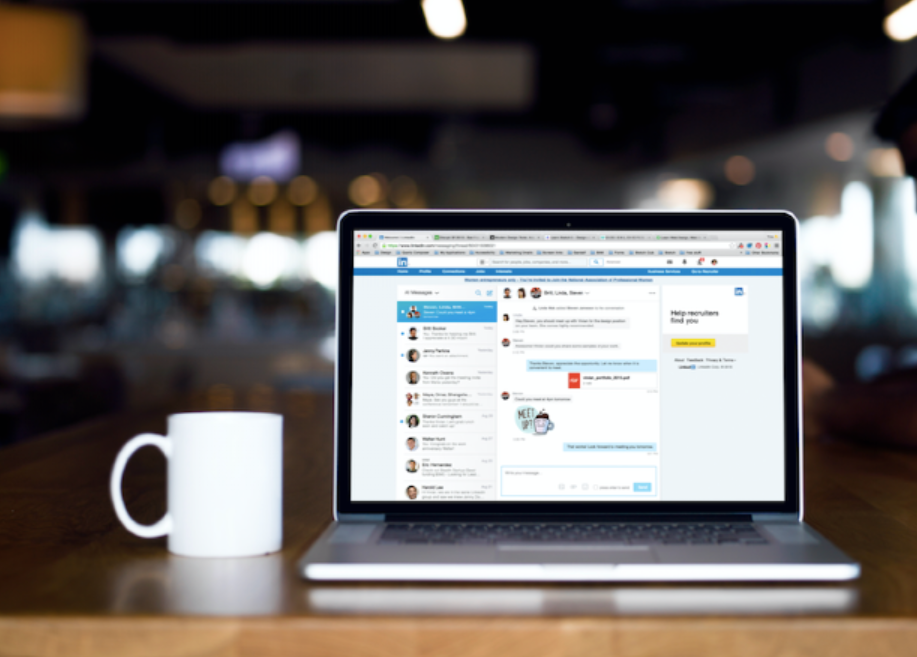Canberra has long been Australia’s policy, public-sector and knowledge hub — a compact city where government departments, defence contractors, research institutions and professional services sit cheek-by-jowl. That mix shapes a B2B marketing landscape unlike most Australian capitals: long sales cycles, procurement-driven buying, and decision-makers who value expertise, evidence and relationships. Over the next few years, LinkedIn is poised to become not just another channel for Canberra B2B marketers, but a central platform for reputation, relationship-building and demand generation. This article explains why, and how B2B teams in Canberra can make the most of LinkedIn’s growing role.
Why LinkedIn fits Canberra’s B2B DNA
-
Trusted professional environment
Canberra’s buyers—policy advisors, agency procurement teams, university researchers, consultants—are professionals who expect rigor. LinkedIn’s identity-led, professional-first environment aligns naturally with that expectation. Profiles, recommendations, whitepapers and thought leadership all signal credibility in ways that other social platforms don’t. -
Targeted reach to niche decision-makers
LinkedIn’s targeting (by job title, seniority, company, industry, skills, groups) is especially useful in Canberra where relevant audiences can be small and highly specific: deputy secretaries, chief information officers, research heads, procurement managers. Reaching those people cost-effectively off-platform is hard; LinkedIn makes it practical. -
Content discovery and long-form engagement
Canberra buyers often seek depth (policy briefs, case studies, technical papers). LinkedIn supports long-form posts, articles, document uploads and native video — formats that let vendors explain methodology, show evidence and build trust before a conversation starts. -
Relationship-first selling suits long procurement cycles
Sales in Canberra often involve multiple stakeholders and formal procurement windows. LinkedIn supports relationship nurturing over months (and years) — regular content, introductions, commenting and group engagement create the familiarity that precedes formal RFIs and tenders.
Core LinkedIn strategies for Canberra B2B teams
-
Build authority with evidence-backed thought leadership
Publish concise policy briefs, case studies, project retrospectives and short explainer videos. Pull out key data and recommendations into a simple post and link to a longer PDF or article. Credibility beats flashy marketing. -
Map stakeholders and use targeted outreach responsibly
Create segmented lists (e.g., procurement leads in ACT Government, research directors at universities, IT heads in defence contractors). Use personalised connection requests and followups that reference shared context — conferences, legislation, local initiatives — rather than generic sales lines. -
Amplify tender and procurement intelligence
Use LinkedIn to publicise wins, lessons learned and capability statements. When you’re shortlisted for a tender, share a sanitized case study that highlights outcomes and KPIs. This helps shape future procurement perceptions. -
Use employee advocacy to scale trust
Canberra organisations hire smart people. Encourage consultants, researchers and subject-matter experts to post insights and amplify corporate content. Peer-to-peer posts from real employees often get better engagement and feel more authentic. -
Leverage Accounts & Matched Audiences for ABM
For high-value targets (government departments, large contractors), run account-based campaigns using matched audiences. Pair targeted ads with personalised content sequences — awareness → evidence → invite to webinar → one-to-one follow-up. -
Host tight, topical virtual events and executive roundtables
Micro-webinars for 20–50 relevant attendees (e.g., “How the new procurement guidelines affect IT transformation projects”) work far better in Canberra than mass webinars. Use LinkedIn Events plus direct invites to curate intimate, high-value discussions.
Content types that work best in Canberra
-
Short policy summaries (one-page briefs)
-
Case studies with measurable outcomes (cost savings, time reduced, compliance outcomes)
-
“Explainer” videos (3–6 minutes) focused on methodology or regulatory impact
-
Carousel documents (slides) that outline frameworks or decision matrices
-
Opinion pieces that respond to local policy changes or sector reports
-
Employee spotlights that highlight domain expertise
Measurement: what to track (beyond vanity metrics)
-
Engagement by target account and role (are the right people reading/liking/commenting?)
-
Conversion flow for account-based sequences (view → content download → event registration → meeting)
-
Influence on pipeline (track opportunities where LinkedIn was the earliest touch)
-
Content-assisted tender wins (attribute content that informed procurement panels)
-
Employee amplification metrics (which employee posts drive highest engagement among target audiences)
Risks and how to manage them
-
Compliance & confidentiality: Canberra clients demand strict privacy. Never share proprietary or sensitive information; use anonymised case studies and get approvals for any public claims.
-
Reputation risk: Poorly informed opinion pieces can backfire in a policy environment. Vet claims with subject-matter experts before publishing.
-
Over-automation: Cold, templated LinkedIn outreach is obvious and ineffective in tight networks. Prioritise tailored messages and human follow-up.
Emerging features to watch (and why they matter)
-
LinkedIn’s continued investment in native document sharing and newsletters makes it easier to distribute policy-grade content without forcing a website visit.
-
Improvements to account-based advertising and analytics will close the loop on ABM attribution — valuable for multi-stakeholder sales.
-
Creator tools and live audio/video features let firms host local thought-leader sessions that create genuine two-way dialogue with Canberra audiences.
Practical 90-day starter plan for Canberra B2B teams
-
Audit: Identify 10 priority target accounts and the decision-makers in each.
-
Content sprint: Produce 3 content assets — a one-page brief, a 5-minute explainer video, and a 1,200-word case study.
-
Employee activation: Recruit 6 subject experts to post twice monthly and amplify corporate posts.
-
ABM pilot: Run a small matched-audience campaign to the 10 accounts with a single CTA: download the brief or register for an invite-only roundtable.
-
Measure & iterate: After 90 days, assess engagement and pipeline influence; double down on formats and accounts that move the needle.
Conclusion
Canberra’s B2B ecosystem values substance: evidence, credibility and trusted relationships. LinkedIn’s professional context, precise targeting and content formats match those needs, making it a natural growth channel for Canberra marketers who are willing to invest in quality content, personalised outreach and employee-led amplification. The future of B2B marketing in Canberra won’t be about chasing impressions; it will be about building influence, shaping procurement narratives and helping decision-makers make better, faster choices — with LinkedIn’s growing role at the heart of that effort.


